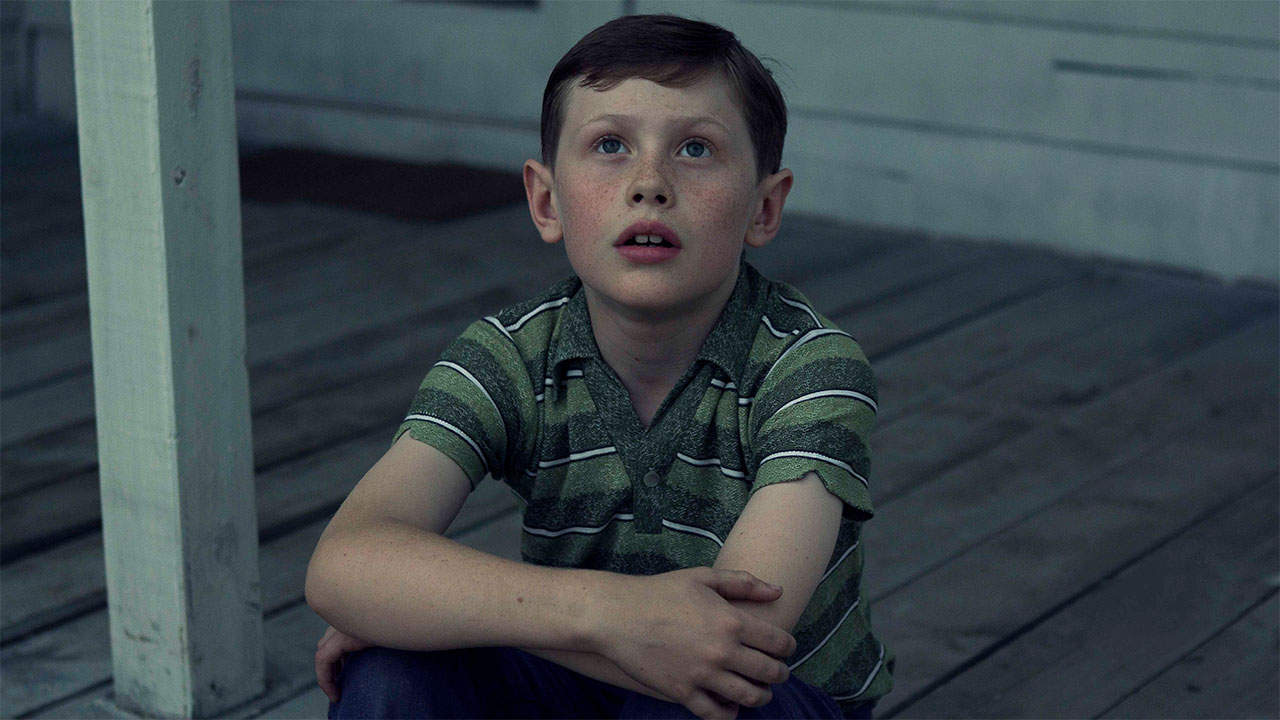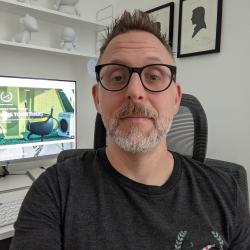Australian short The Landing is one of those film’s that’s going to leave you with questions. Whether based around the impressive craft on show in the production of the piece or aimed at the cleverly deceptive storyline, Josh Tanner’s film is one that demands exploring in greater detail. Looking to provide you with some of those answers and answer a few of the questions we had after watching the film, we spoke to the Australian filmmaker to find about more about the plot and production of his striking short.
Conceptually, The Landing plays-out like a cross between a period drama and a sci-fi thriller, where did the narrative for your short originate?
The origin of the film started from an image I had in my head of a middle-aged man unearthing a spaceship buried underneath barren farmland. This seed spurred on the concept of a UFO landing being covered up not by the usual government agent types, but instead by a simple farmer and his son.
Although not strictly a science-fiction film, your film somewhat cleverly plays with the expectations surrounding this genre, how important was it for you that not only did you create something that almost transitions genres, but also something that felt unique?
For Jade van der Lei (my co-writer/producer) and I, it was important to play within a palette of not only the Spielberg/Amblin era of Sci-Fi, but also (if not more importantly) the golden age of the 1950s/early 60s Sci-Fi cinema which gave us carte blanche to focus on the allegorical significance those films had during what was going on in America at that time both socially and politically. The film was always going to be darker and address those kinds of themes more directly than our sci-fi inspirations, so it was crucial to inject a bit of mystery and innocence into the story to make the transition into that territory engaging.
Visually, it’s a stunning short, with the production values feeling of a “feature” quality – what can you tell us about the production?
The film was definitely crafted with the intention, despite its isolated rural setting, to have a large scope, and feel feature-esque. We shot the film on the Arri Alexa with 50-year-old Cooke panchro primes and completed it on a budget of roughly 75,000 USD in 2013 with a crew of approximately 50.
The Landing is set in Midwest America, but filmed in Australia – what kind of challenges did this set for the production?
The biggest hurdle was absolutely the fact that we were trying to make an American film in Australia. For quite some time now Hollywood has shipped their productions over here, and doubled our country for the US. Ultimately we were fortunate enough to make use of a remanent from one of these films, namely Bryan Singers 2006 film Superman Returns. Repurposing a barn that had been built for the Kent Farm sequence in the film, we had found a stunning slice of architectural Americana and knew if we could bring everything up to that level of authenticity that we were going to be in good shape.
One of the things I loved about the film was the performances from your cast and whilst Henry Nixon does sterling work as the father determined to prove his worth, it’s young Tom Usher that really steals the show with his assured, almost dialogue-free performance – how much work did you have to do with your cast to get the performances right?

Similar to the location, finding the right talent was also a challenge to meet in regards to having an American set film. We were incredibly blessed to cast some talented performers who had experience working on Hollywood productions shot here, specifically Henry Nixon (The Pacific) and David Roberts (The Matrix sequels, Ghost Rider). It was important that they got the accent down, and even with their prior experience we made sure they spent some time with a dialogue coach before the shooting got underway. Casting and working with young Tom Usher was wonderful. Filling the role demanded a child actor who did more acting with his eyes and mannerisms than dialogue. Tom had a great handle on the accent in the little dialogue he had, but what he really had in spades was the weighty stillness and old soul presence that I was after. He really seemed like he was plucked out of another place and time.
Apart from the scene with the “meteor” falling from the sky, how much other (maybe less obvious) VFX work went into the film?
There was a great deal of VFX work that went into making the farm location a reality (upwards of 50 shots – an ungodly amount for a short film). After finding the barn, we knew there would need to be VFX work at play as the Superman production team burned down the surrounding farmhouse set leaving it a lone structure in a field. In the end we needed to create the farmhouse from scratch as a combination of matte painting and set builds which were composited in with the barn and some plate-shots of wheat fields. It was a huge effort, but aside from physically building these structures in Australia or travelling to the US, we simply had no other option.
Throughout the film the period detail feels very well-considered, how did you go about recreating 1960’s feel of the film?
We put a great amount of research work into the production design, costumes and hair/makeup and even had a couple of consultants on board (farmers in Illinois and Kansas who assisted with the authenticity of the production on many levels). Since completing the film Ive seen props that we used in many films from the era my favourite in particular being the same wireless radio we used popping up in the 1953 War of the Worlds.
The film had quite the festival run – how did you approach the distribution of the short once it was complete? Did you decide early on that you wanted to take the festival-first approach?
We always intended The Landing to have feature-esque scope that played best on the big screen and for that reason it felt natural that we should attempt to explore all festival avenues that were appropriate, at least initially. We made sure that we targeted a mix of mainstream festivals and also genre festivals to exploit the films Sci-Fi flavour which ended up being a wise move when we premiered at the 46th Sitges International Fantastic Film Festival and took out the Best Short award which had just become Academy of Motion Pictures Arts & Sciences accredited, effectively qualifying The Landing for the 2015 Academy Awards. We went on to screen at over 50 festivals and received a total of 10 best film awards at festivals such as LA Shorts Fest, Cleveland and Rhode Island.
When it came to releasing ‘The Landing’ online – did you have a plan on how to get the film in front of an audience?
Besides building up a modest Facebook fan base, we targeted film culture blogs, which like the festival run included a mix of the mainstream and genre fixated publications. Snagging a Short of The Week feature has been a brilliant coup for us and will be a huge contributor for any online success we do have from this point onwards. It is a long film by festival and online standards (roughly 18 minutes), but we hope the story transcends its length and people get on board and share the love.
I believe for the internet release you even went as far as regrading the film especially for the small screen – can you tell us a little about why you chose to do this and do you think this is something other filmmakers need to be considering more?
Having intended the film to be seen initially on the big screen the film was graded a certain way to keep certain things bathed in darkness and mystery and look great in a cinema. It is a dark film, with many scenes set at night. For this reason, we needed to make sure we took on board the fact that many people wont be watching the film in a dark space with the online release, and thus went back in and shifted the gamma in the night scenes to offset this change in viewing environment. I think recalibrating the film for the online format is wise and should be considered by filmmakers if it is needed. I personally couldn’t bear to have a viewer miss important detail because the picture is too dark.
What are you working on next?
Currently were adapting The Landing into a feature film, which has been an exciting process to unpick the narrative of the short and reshape and re-imagine it as full length. Weve also got a supernatural-thriller in the works, which also has a history bending narrative that were excited about.
 Rob Munday
Rob Munday